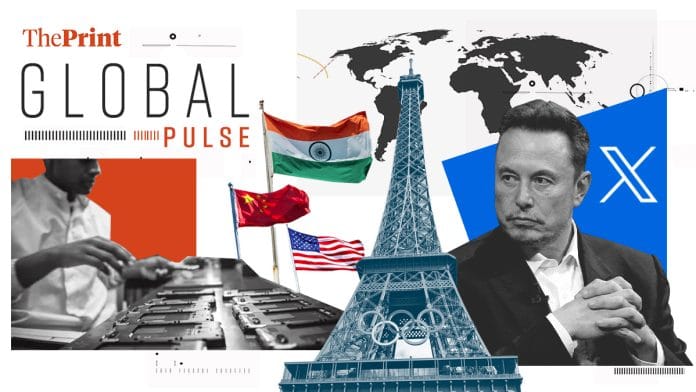New Delhi: India was poised to take advantage of the China+1 strategy as global manufacturers looked to pivot from China after the pandemic. Just look no further than Tamil Nadu for some spoils of the victory: the state managed to get Foxconn to manufacture the latest iPhones outside China for the first time. Other Taiwanese giants also made the jump, which ThePrint reported on earlier this year.
And the world took notice. The US shifted gears to focus on India as a manufacturing hub, hoping to reduce its reliance on China. But the Washington Post highlights a contradiction—the gamble might not be best placed because India’s industrial infrastructure is sorely lacking when it comes to component manufacturing.
And whom could India turn to but China? India’s dependence on Chinese imports—which has been growing twice as fast as overall imports—for components for smartphones, solar panels, and medicines is now a “reality check” for American policymakers, according to the Post.
This became an issue when the Uyghur Forced Labor Prevention Act (UFLPA)—effective since June 2022, just as the China+1 strategy began to make inroads in global markets in India, Indonesia, Vietnam—meant that imported solar products from India would have to be put in cold storage. And this is no small number: last year, the US imported $2.3 billion worth of solar products from India, and in the second quarter of 2024, India accounted for 11 percent of the US’s solar imports.
The US put restrictions on Indian solar panels citing ‘forced labour’ in China, as reported by ThePrint earlier. The Global Times was quick to label the restrictions as an excuse for the US’s need for protectionism.
“It is apparent that the current development of the Indian manufacturing sector is, to a large extent, dependent on the Chinese supply chain, as India needs Chinese raw materials, components, technologies and services,” Global Times points out, dismissing the claims of forced labour as “utter lies”.
Apparently $43 million in shipments of electronic equipment from India has been detained by the US for inspection since October 2023. It remains to be seen whether the US will be able to pull off the complicated gymnastics of sifting and separating Indian exports from the sum of its imports—especially given that China is India’s largest trading partner with over $118 billion flowing in the fiscal year 2023-24.
It seems India will never be able to step out of China’s economic shadow. In Bloomberg, Andy Mukherjee compares India’s much-feted title as the fastest-growing economy to Chinese “tight-money policy”. The deposit crunch in Indian banks and the RBI’s reaction, he writes, is similar to what happened in China—households were forced to save at low, state-controlled deposit interest rates instead of enjoying their purchasing power.
Mukherjee notes yet another fracture between Indian monetary and fiscal policy.
While the RBI is attempting to curb inflation by encouraging deposits and savings, the government is doing the opposite, he writes. The RBI furthermore has shown signs of aversion to the UPI or digital payments through smartphones as it leads to “faster erosion of deposits.”
In conclusion, Mukherjee leaves readers wondering if the Modi-led Indian government can raise the investment-to-GDP ratio to 36 percent, to reach the heights of the pre-2008 numbers while noting that the final consumption expenditure is 60 percent of GDP and investment rate of about 31 percent of output.
But all is not lost for Indian markets. The South China Morning Post is far more generous towards India’s property markets and its transparency mechanisms.
“Records are being broken in both the commercial and residential markets as the world’s fastest-growing major economy continues to power ahead, driven by the dominant service sector,” writes Nicholas Spiro, highlighting that such a trend is the opposite of markets around the world, including the Chinese. He notes that although affordability is a concern, and although inventory is rising exponentially, the demand is able to make up to it.
Spiro ends with the line, “The boom in Indian real estate will lose steam at some point,” highlighting the need for more jobs and the economy to adjust to the demographics of the country.
X banned in Brazil, Paris Mayor creates controversy over Olympic rings
Brazil’s Supreme Court has upheld a ban on Elon Musk-owned X pushing users to move towards another microblogging site Bluesky. The decision comes a month after X closed its office in the Latin American country. To know more about connected events, read the BBC’s report.
Anne Hidalgo, Mayor of Paris, created controversy when she said that the Olympics rings may remain as a permanent fixture to the Eiffel Tower. A petition has been launched against the idea, with a call for the “emblematic monument” to “return to its natural state.” Read the Guardian report to know more.
Also read: International media on India’s growing nuclear capability & the much-awaited regional polls in J&K






